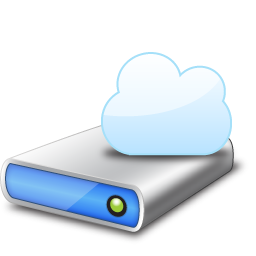 In this day and age, technology is blowing everyone’s mind. Some of the coolest inventions of 2013 have already stormed the market, and new lingo and terminology may confuse those who have trouble keeping up with the pace of science.
In this day and age, technology is blowing everyone’s mind. Some of the coolest inventions of 2013 have already stormed the market, and new lingo and terminology may confuse those who have trouble keeping up with the pace of science.
But if you’ve heard the term “save it in the cloud,” you’re not hearing things, and no, scientists have not harnessed the power of condensation to save your things like a lockbox does. These days, saving digital data files in an always-accessible web-based platform (“the cloud”) is an increasingly popular (and essential) method of backup. Free services like Apple’s iCloud, Microsoft’s SkyDrive, and Google’s Google Drive allow users to backup their files, and share with teams or collaborators via shared access.
For the tech savvy, you can also make your own cloud, but various companies have already developed software for those who don’t have the technical know-how.
If you need help setting up your own cloud storage, here are four of the most popular platforms for doing so:
1. iCloud
Apple’s cloud storage integration comes preinstalled on every device, from iPhones to iPads to their line of Mac computers. It automatically backs up your calendar, photos, documents, contacts, and mail (if you have an @mac account), and wirelessly pushes them to all of your devices. And any edits or changes you make will show up everywhere, thanks to the wireless sync. If you download an app on your iPhone, it will appear on your iPad as well (provided that it is available in iPad format). And now you can use iTunes with iCloud, too: new movie, music, and TV show purchases will be available across all your devices, and each one will remember where you left off.
2. Dropbox
This file hosting service offers cloud storage as well as file synchronization across a variety of platforms, regardless of operating system. Available for web systems, both OS and Windows, and mobile systems like iOS, Android, Blackberry, and Windows, Dropbox has become one of the most popular options for cloud storage. Install Dropbox on your device, and then save documents and photos in it – either for your own backup, or to share with others. You can invite people to collaborate on a shared Dropbox folder, making it easy to seamlessly communicate with teams or friends: everyone’s files can be seen, edited, and otherwise shared in the specified folder.
3. Google Drive
Much like Dropbox, Google Drive is available on mobile platforms, web services, and desktop clients. Share, access, and collaborate on documents and spreadsheets, create subfolders to organize your content, and receive invites to view shared files you can then choose to save or delete. You can even build a slideshow presentation using the add-on Google Slides, and work with a partner miles away. It’s easy to use Google Drive if you already have a Google account, and it is seamlessly integrated with Gmail.
4. Skydrive
Microsoft’s file hosting server works the same way as the others, except that it is available on a smaller scale of platforms: Windows phone, iOS, and Android (no Blackberry), and it is only available on Windows desktop operating systems (for obvious reasons.) Windows 8 users with Microsoft accounts can also back up their system settings and background personalizations to take with them (for mobile use), and the Microsoft Office Suite (Word, Excel, Powerpoint, and OneNote) is available for free in the web browser version. Plus, college students get an extra bonus storage capacity for free for one year.
Image Source: fortressitx.com

